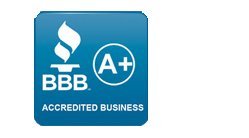High Security Locks & Lock Grading
Emergency Lockout Services
Law Enforcement Discount
Warranties Available
What are High Security Locks and why should you consider them?
Ordinary locks offer a fair degree of security and can keep intruders out in most cases. These locks are limited in the protection they can offer.
If you have ever been burglarized before or simply never want to experience this horrific violation of your privacy, please continue reading this explanation so you can understand what steps you can take to greatly reduce your chances of being victimized through inferior locks.
To understand the difference between "regular" or low security locks and keys from high security locks and keys, one must know how locks are defeated.
Common Low-Security Lock Bypasses
Videos of these attacks can easily be seen online, by searching for them in your favorite search engine.
While there is no such thing as a Pick-Proof, Drill-Proof, or Bump-Proof lock, our High Security Products have numerous safeguards built in that will greatly hinder the success of any of these attacks. We like to say that these locks are Pick, Bump or Drill resistant.
To hinder a Drill Attack, steel rods, plates and other protectors are strategically placed in the lock to deflect the drill bit from its target. If the drill bit does not successfully hit one specific area within the deadbolt, the drill attack will fail. The hardened stainless steel deflectors greatly reduce the ability for success.
For Lock Pick and Bump Attacks, companies began to add numerous types of pins throughout the keyway. These pins not only change the amount of accurately aligned pins needed to pick the lock, but are also placed throughout the cylinder on either a horizontal or diagonal axis. A standard deadbolt will have five pins that drop down from the top of the cylinder. The addition of a horizontal slide on the key, cuts the likelihood of a successful bump or pick.
Any lock can only be as good as the door frame strength. If the burglar tries to kick the door in, ordinary locks will succumb to this attack in a matter of seconds. All high security locks come with reinforced strike plates. The strikes are mounted in the door frame and are screwed into the studs in the wall as opposed to ordinary strikes which are only screwed in the soft wood stripping in the frame. The difference in protection is tremendous.
As a burglar's biggest enemy is time...his chances of getting caught rise substantially with each extra minute it takes to break into your home or business.
High security locks have been tested by Underwriters Lab to withstand the above attacks in a time test. This means that your chances of keeping out the bad guys is significantly increased by installing high security locks.
Another important factor in many high security locks is what we call "key control". This means that the restricted keys we provide are registered to you and NO ONE can copy your keys without your knowledge or consent. Other locksmiths cannot copy our keys nor can they fit keys to the locks we provide to you.
If you loan a key to a family member, neighbor, worker or employee, they won't be able to copy that key. Once you get the key back from them, you do not need to change the locks or even consider the need for doing so. They don't have another key! We also keep records of each and every key for you as well as when each key was made. You can always check to see how many keys were ever made for your locks.
Locks that are available through hardware stores or at the big home centers are considered low security even though some of the colorful packaging may indicate that they are high security.
For a lock to really be considered high security, it must have the Underwriters Laboratory UL 437 rating. We stock several brands of UL 437 locks.
Each brand have different patented features and matching up these features to your specific needs is a task that we are proficient at.
A Word About Do Not Duplicate/Do Not Copy Keys
A burglar's biggest enemy is time...his chances of getting caught rise substantially with each extra minute it takes to break into your home or business.
High security locks have been tested by Underwriters Lab (UL) to withstand the above attacks in a timed test. This means that your chances of keeping out the bad guys is significantly increased by installing high security locks.
A burglar's biggest enemy is time. The chances of getting caught rise substantially with each minute it takes to break into your home or business.
High security locks have been tested by Underwriters Lab (UL) to withstand the above attacks in a timed test. This means that your chances of keeping out the bad guys is significantly increased by installing high security locks.
Another important factor in many high security locks is what we call "key control". This means that the restricted keys we provide are registered to you and NO ONE can copy your keys without your knowledge or consent. Other locksmiths cannot copy our keys nor can they fit keys to the locks we provide to you.
If you loan a key to a family member, neighbor, worker or employee, they won't be able to copy that key. Once you get the key back from them, you do not need to change the locks. We also keep records of each and every key for you as well as when each key was made. You can always check to see how many keys were ever made for your locks.
Locks that are available through hardware stores or at the big home centers are considered low security even though some of the colorful packaging may indicate that they are high security. For a lock to really be considered high security, it must have the Underwriters Laboratory (UL) 437 rating. We stock several brands of UL 437 locks.
Each brand has different patented features and matching up these features to your specific needs is a task that we are trained for. Visit A-1 Lock and Safe today to find the high-security lock that will work best for your home or business.
Grades 1, 2, or 3?
The American National Standards Institute (ANSI) rates locks along three grades or levels. The standards are maintained by The Builders Hardware Manufacturers Association (BHMA). A deadbolt or lever lock can be graded with a Grade 1, 2 or 3 designation.
The testing encompasses durability and strength. Prices are directly proportional to the grade of the lock.
A Grade 3 lock generally can be in the $15-35 range where a Grade 2 lock will be in the $45 -100 range. A Grade 1 lock will generally be in the $100 + range. You get what you pay for.
A Grade 1 is the highest. These are commonly used at hospitals and schools.
A Grade 2 is in the middle. These are used in better homes and commercial spaces.
A Grade 3 is the bottom end. These are often cheap imported locks found at home centers and hardware stores.
These deteriorate and become non functioning with a life expectancy of about 5 years. These are throw away locks where Grade 1 and 2 locks should last for decades and are serviceable if a problem occurs.
Cycle Test
A cycle test measures the number of times a bolt can be unlocked and locked. Grade 2 and 3 deadbolts should be able to complete 1 cycle 800,000 times while a Grade 1 deadbolt should complete 1 cycle 1 million times.
Deadbolt Projection
To secure the door, a deadbolt should be able to project into the doorjamb or door frame. Grade 2 and 3 deadbolt locks project 5/8 of an inch when secured. A Grade 1 deadbolt projects a full inch when secured. Most deadbolts of any grade manufactured today have the 1 inch specification. All Grade 1 locks, must have the 1 inch spec.
Impact Test
When secured, a deadbolt should be able to withstand two blows of various foot pounds of force. A Grade 3 deadbolt needs to withstand 90 foot pounds. Grade 2 needs to withstand 120 foot pounds. A deadbolt with an ANSI Grade 1 needs to withstand 150 foot pounds of force.








Share On: